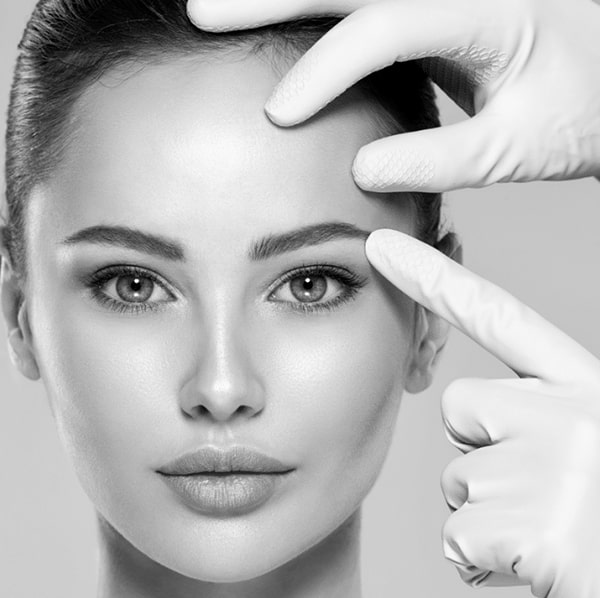Eyebrow Hair Transplant: Redefining your look
Transform Your Look, Transform Your Life: Experience the Artistry of Eyebrow Hair Transplantation!
What is an eyebrow transplant?
An eyebrow transplant is a surgical procedure that involves transplanting hair follicles from a donor area (typically the scalp) to the eyebrows. The goal of an eyebrow transplant is to enhance or restore the appearance of the eyebrows by adding more hair to sparse or thin areas, filling in gaps, or reshaping the eyebrows.
How much does eyebrow transplant cost?
The cost of an eyebrow transplant can vary depending on several factors, including the geographic location, the surgeon's expertise, the number of grafts needed, and any additional services or facilities included. It's important to note that the cost can also vary between different clinics and countries. The cost of an eyebrow transplant varies based on the specific procedure and extent of restoration needed. For a partial eyebrow transplant, targeting specific areas, the cost typically falls between $2,000 and $4,000. In contrast, a full eyebrow transplant, aiming for complete restoration, can range from around $4,000 to $8,000 or higher. The final price is determined by the number of grafts necessary to achieve the desired eyebrow thickness and shape.
Who gets an eyebrow transplant?
Eyebrow transplants are typically sought by individuals who have experienced eyebrow hair loss or thinning due to various reasons. Eyebrow transplants are sought after in various situations. Overplucking or excessive grooming practices, such as threading or harsh cosmetic product usage, can lead to sparse eyebrows, a concern remedied by transplant procedures, restoring natural fullness and shape. Medical conditions like alopecia areata, trichotillomania, or chemotherapy often cause eyebrow hair loss, prompting individuals to consider transplants for eyebrow restoration and overall appearance enhancement. Scarring from injuries, burns, or previous procedures can distort eyebrows; transplants prove invaluable in concealing scars and achieving a natural look. Genetic factors sometimes result in naturally sparse eyebrows, and eyebrow transplants are utilized to enhance density and shape, improving aesthetics. Additionally, aging can cause eyebrow thinning, impacting facial definition and youthfulness; eyebrow transplants counter this effect, restoring density and shape for a more rejuvenated appearance.
How common are eyebrow transplants?
Eyebrow transplants have become increasingly common in recent years as more people seek ways to enhance the appearance of their eyebrows. While specific statistics on the prevalence of eyebrow transplants may vary, it is considered a popular and sought-after cosmetic procedure.The rising popularity of eyebrow transplants can be attributed to various factors. Firstly, there is a growing emphasis on eyebrows in recent years, as they play a significant role in framing the face and greatly impact a person's appearance. Trends have shifted towards well-groomed and defined eyebrows, focusing on fullness and shape. Consequently, an increasing number of individuals are seeking methods to achieve their desired eyebrow aesthetic. Secondly, advancements in hair transplantation techniques, such as follicular unit extraction (FUE) and follicular unit transplantation (FUT), have significantly improved. These techniques enable precise extraction and transplantation of hair follicles, allowing surgeons to create natural-looking and aesthetically pleasing eyebrow results. Additionally, the rise of social media and online platforms has made information about cosmetic procedures, including eyebrow transplants, more accessible to a wider audience. This increased awareness has contributed to the growing interest in and acceptance of eyebrow transplants as a viable option for enhancing eyebrow appearance. Lastly, the procedure's popularity is further boosted by the positive results and high patient satisfaction it delivers. Skilled and experienced surgeons can create natural-looking eyebrows that seamlessly blend with the individual's facial features, leading to positive reviews and word-of-mouth recommendations from satisfied patients.
What happens before an eyebrow transplant procedure?
Prior to undergoing an eyebrow transplant, several crucial steps and considerations are involved. The process initiates with an initial consultation with a qualified eyebrow transplant surgeon, where your eyebrow-related goals and concerns are discussed. The surgeon assesses your eyebrows' current condition, evaluating issues like hair loss and donor hair quality. A thorough review of your medical history is conducted to identify any factors that might impact the procedure, considering past surgeries, medications, and underlying health conditions. The surgeon examines your facial features, focusing on shape, position, and symmetry, and collaborates with you to plan the desired eyebrow shape and fullness, ensuring a tailored treatment approach aligned with your aesthetic objectives and facial harmony. Pre-operative instructions are provided, encompassing dietary restrictions, medication adjustments, and lifestyle modifications essential for a smooth surgery. Informed consent is obtained, indicating your understanding of the procedure, potential risks, and expected outcomes. The surgeon and their team prepare you for the procedure, which may involve cleaning the treatment area, marking the desired eyebrow shape, and capturing pre-operative photographs for documentation purposes. Depending on the case and surgeon's preference, local anesthesia with or without sedation is administered to ensure your comfort and minimize discomfort during the procedure.
What happens during an eyebrow transplant procedure?
During an eyebrow transplant procedure, several meticulous steps are undertaken to transplant hair follicles from a donor area to the eyebrows. The process begins with thorough preparation, involving the cleaning and sterilization of both the eyebrows and the donor area. Local anesthesia is administered to ensure your comfort throughout the procedure. The surgeon then proceeds with donor hair extraction, which can be done through either Follicular Unit Extraction (FUE), where individual hair follicles are extracted using a small punch tool, or Follicular Unit Transplantation (FUT), involving the removal of a thin strip of scalp containing hair follicles, which is then dissected into individual grafts. The extracted hair follicles are meticulously prepared, dissected into individual grafts, each containing one to a few hair follicles, ensuring their viability. The next step involves the surgeon making tiny incisions or punctures in the recipient area of the eyebrows, creating precise recipient sites mirroring the natural growth pattern of eyebrows. The prepared grafts are then meticulously placed into these incisions, ensuring proper alignment with the desired eyebrow shape and contour. Once the transplantation is complete, the surgeon provides instructions on post-operative care, including guidelines on caring for the transplanted eyebrows, managing discomfort, and promoting proper healing. Medications or post-operative treatments may be prescribed to aid in the healing process.
What happens after an eyebrow transplant procedure?
Following an eyebrow transplant procedure, there are several crucial factors to consider during the immediate post-procedure period and subsequent recovery. Initially, you may experience redness, swelling, and mild discomfort, which are typical and generally subside within a few days. The healing and recovery phase, spanning one to two weeks, demands strict adherence to post-operative instructions, encompassing cleansing routines, prescribed ointment application, and avoidance of activities that might impede the healing process. Within the first few weeks post-surgery, temporary shedding of transplanted hairs occurs as they enter a resting phase before new growth emerges. After this shedding phase, gradual hair regrowth commences, typically noticeable within three to four months, although individual timelines vary. Patience is vital, as it may take up to a year to witness the full results of the transplant. To ensure enduring results, diligent care and maintenance of the transplanted eyebrows are essential, encompassing specific guidelines and routines provided by your surgeon. It's important to have realistic expectations regarding the timeline of hair regrowth and final results. Every individual's response to the transplant can vary, and it's common for the eyebrows to go through different stages of growth and refinement during the healing process.
What are the expected results of an eyebrow transplant?
The expected results of an eyebrow transplant can vary depending on individual factors such as hair quality, donor area characteristics, and the surgeon's expertise. In summary, a successful eyebrow transplant can achieve various significant outcomes. Firstly, it aims to increase eyebrow density by transplanting hair follicles into sparse areas, resulting in a fuller and well-defined eyebrow appearance. Secondly, skilled surgeons meticulously implant hair follicles to mimic natural growth patterns, ensuring the transplanted hair looks genuine and seamlessly blends with existing eyebrows. Additionally, the procedure can enhance overall eyebrow shape and symmetry, focusing on specific areas like the arch or tail for a balanced and aesthetically pleasing look. Importantly, the transplanted hair is usually resistant to the hormone dihydrotestosterone (DHT), ensuring permanent results unaffected by future hair loss. Following the transplant, there is gradual growth and refinement: initially shedding within weeks, new growth begins within months, and transplanted hairs thicken and lengthen over time. The complete results of an eyebrow transplant typically become evident around 8 to 12 months post-procedure.
Contact us:
Tél: 00 216 22 960 337 - Email: contact@carthagomed.com









